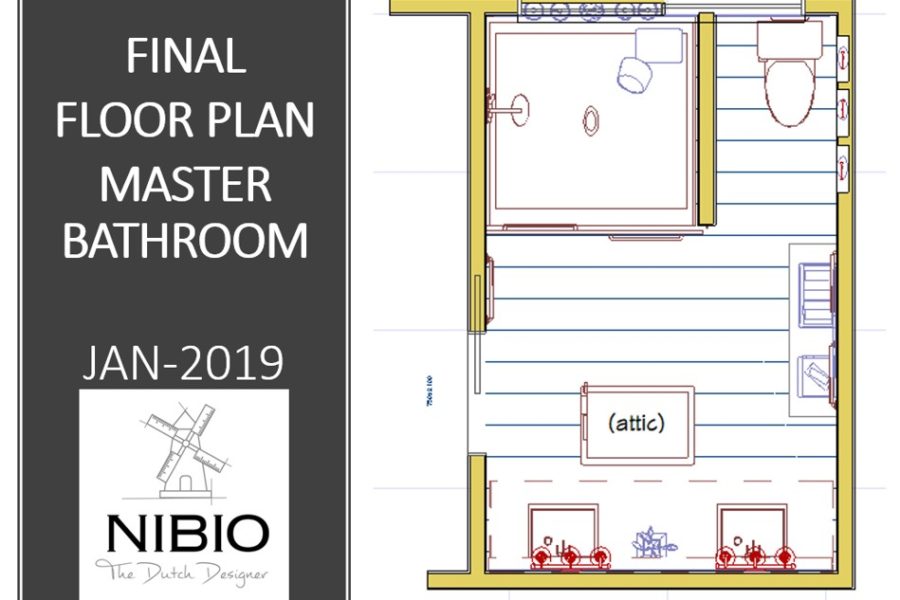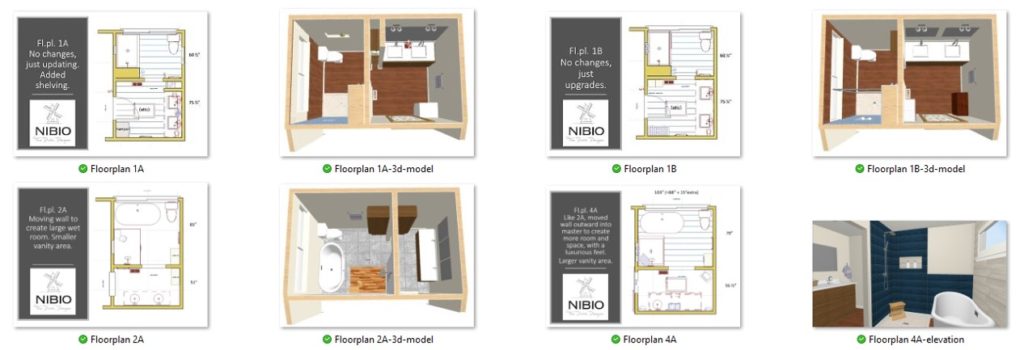Traditional Japanese Bathroom Design Principles

Japanese bathroom design is a harmonious blend of functionality, aesthetics, and hygiene, reflecting a deep respect for tradition and the natural world. This approach creates spaces that are not only practical but also calming and restorative.
Functionality
Japanese bathrooms are renowned for their efficient use of space and ease of cleaning. This is achieved through a combination of design elements and practices:
- Compact Design: Japanese bathrooms are often smaller than their Western counterparts, making efficient use of space a priority. This is achieved through clever layout and the use of built-in features.
- Multi-functional Features: Many Japanese bathrooms feature multi-functional fixtures, such as showerheads that can be used for both showering and bathing, and toilets that include bidet functions. This maximizes the use of space and minimizes the need for separate fixtures.
- Easy Cleaning: Japanese bathrooms are designed for easy cleaning. Smooth surfaces, minimal clutter, and integrated drainage systems make it simple to maintain a clean and hygienic environment.
Aesthetics
Japanese bathroom design emphasizes minimalism, natural materials, and tranquility. This creates a space that is both visually appealing and conducive to relaxation:
- Minimalism: Japanese bathrooms often feature a minimalist aesthetic, with clean lines, simple shapes, and a focus on functionality. This creates a sense of calm and spaciousness.
- Natural Materials: Traditional Japanese bathrooms often incorporate natural materials such as wood, stone, and bamboo. These materials create a warm and inviting atmosphere and evoke a connection to nature.
- Tranquility: The design of Japanese bathrooms emphasizes tranquility. Soft lighting, soothing colors, and the use of natural elements create a relaxing and restorative environment.
Hygiene, Japanese bathroom floor plan
Separation between wet and dry areas is a key principle in Japanese bathroom design, ensuring hygiene and preventing the spread of moisture. This is achieved through:
- Separate Bathing and Toilet Areas: Japanese bathrooms often have a distinct bathing area (often called a “furo”) and a separate toilet area. This separation helps to prevent the spread of moisture and bacteria.
- Dry Area: The dry area, typically where the toilet and sink are located, is kept separate from the wet bathing area. This ensures that the floor and other surfaces remain dry, minimizing the risk of mold and mildew.
- Drainage: Japanese bathrooms feature efficient drainage systems to quickly remove water from the wet areas. This helps to prevent the accumulation of moisture and ensures a clean and hygienic environment.
Essential Elements of a Japanese Bathroom Floor Plan

A well-designed Japanese bathroom floor plan incorporates several essential elements that contribute to its functionality, aesthetics, and overall experience. These elements are carefully chosen and arranged to create a space that is both practical and relaxing.
Essential Elements
The following table Artikels the essential elements of a Japanese bathroom floor plan, along with their descriptions, purposes, and examples:
| Element | Description | Purpose | Example |
|---|---|---|---|
| Washlet (Toilet with Bidet) | A toilet with an integrated bidet for enhanced hygiene. | Provides a comfortable and hygienic cleaning experience. | A Toto Washlet with adjustable water temperature and pressure. |
| Shower Area | Typically a separate space with a handheld showerhead. | Allows for showering without getting the entire bathroom wet. | A shower stall with a rain shower head and a built-in bench. |
| Tsubo (Bathtub) | A deep, rectangular bathtub for soaking. | Promotes relaxation and rejuvenation. | A traditional Japanese bathtub made of Hinoki wood. |
| Wash Basin | A separate sink for washing hands and face. | Provides a designated area for personal hygiene. | A minimalist wash basin with a built-in soap dispenser. |
| Storage Solutions | Built-in shelves, cabinets, and drawers for organizing toiletries and cleaning supplies. | Maximize space and keep the bathroom tidy. | A wall-mounted shelf with a mirror and a pull-out drawer for storage. |
Modern Japanese Bathroom Floor Plan Adaptations

While traditional Japanese bathrooms prioritize functionality and minimalism, modern adaptations embrace a blend of tradition and contemporary design principles, incorporating Western influences, smart technology, and sustainability practices.
Western Influences
The evolution of Japanese bathroom design has been significantly influenced by Western trends. Modern bathrooms often feature larger shower stalls, offering a more spacious and comfortable showering experience. This shift reflects the increasing emphasis on personal comfort and convenience. Additionally, the concept of separate wet rooms, where the shower area is enclosed and separated from the rest of the bathroom, has gained popularity. This approach enhances hygiene and prevents water from splashing onto other surfaces.
Smart Technology
Modern Japanese bathrooms are increasingly integrating smart technology to enhance functionality and user experience. Automated lighting systems can adjust brightness levels based on the time of day or user preference, creating a soothing ambiance. Heated floors provide a warm and comfortable experience, especially during colder months. Touchless faucets, activated by sensors, offer a hygienic and convenient way to control water flow.
Sustainability
Contemporary Japanese bathroom designs prioritize sustainability, incorporating eco-friendly materials and water-saving fixtures. The use of recycled materials, such as bamboo and reclaimed wood, minimizes environmental impact. Water-efficient showerheads and toilets significantly reduce water consumption, contributing to water conservation efforts.
Japanese bathroom floor plans often prioritize functionality and space efficiency, with a focus on creating a calming and minimalist environment. While traditional Japanese bathrooms may not feature opulent decor, they can still be enhanced with stylish touches. For those seeking a touch of luxury, incorporating replica Versace bathroom accessories can add a touch of elegance without breaking the bank.
These accessories can complement the clean lines and simplicity of a Japanese bathroom design, creating a unique and sophisticated space.
Japanese bathroom floor plans often prioritize functionality and minimalism, with a focus on clean lines and efficient use of space. To create a serene and calming atmosphere, consider incorporating elements of a coastal theme, such as natural materials like bamboo and stone.
You can find inspiration for incorporating these elements in your Japanese bathroom by browsing for coastal theme bathroom accessories that blend seamlessly with the minimalist aesthetic of a Japanese bathroom floor plan. This approach can help create a harmonious and inviting space that feels both modern and traditional.